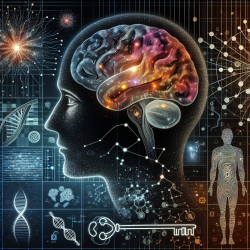The relationship between Asperger’s Syndrome (ASP) and Autism Spectrum Disorder (ASD) has long been a topic of debate among researchers and practitioners. A recent study titled "The relationship of Asperger’s syndrome to autism: a preliminary EEG coherence study" sheds new light on this complex relationship by using EEG coherence to explore neurophysiological differences between ASP and ASD.
Understanding EEG Coherence
EEG coherence is a measure of brain connectivity that assesses the consistency of phase differences between two EEG signals over time. High coherence indicates strong connectivity, while low coherence suggests weak connectivity. This measure provides an objective, unbiased way to explore brain connectivity differences that are not visible through standard visual inspection of EEG data.
Key Findings from the Study
The study revealed significant findings that can enhance our understanding of ASP and ASD:
- Classification Success: Using prior EEG coherence-based discriminant function analysis (DFA) rules, 96.2% of ASP subjects were classified as ASD. However, when compared directly with ASD subjects using new DFA rules, 92.3% of ASP subjects were identified as separate from the ASD population.
- Distinct Neurophysiological Markers: The study found that ASP subjects show unique patterns of brain connectivity that distinguish them from ASD subjects. These findings suggest that ASP may constitute a neurophysiologically identifiable entity within the higher functioning tail of the ASD population distribution.
Implications for Practitioners
The insights from this study offer valuable implications for practitioners working with individuals on the autism spectrum:
- Tailored Interventions: Understanding the distinct neurophysiological markers in ASP can help practitioners develop more tailored interventions that address specific connectivity patterns.
- Differentiated Diagnosis: The ability to distinguish ASP from ASD through EEG coherence can aid in more accurate diagnoses, ensuring that individuals receive appropriate support and services.
The Path Forward
This preliminary study highlights the need for further research with larger sample sizes to validate these findings. By continuing to explore neurophysiological differences within the autism spectrum, we can improve diagnostic criteria and therapeutic approaches, ultimately enhancing outcomes for individuals with ASP and ASD.
The relationship of Asperger’s syndrome to autism: a preliminary EEG coherence study










